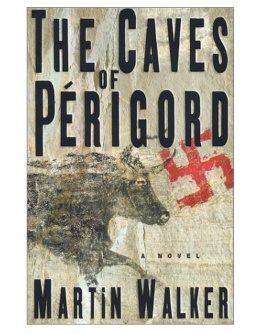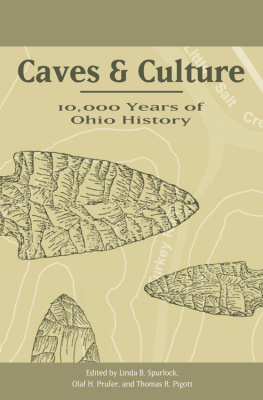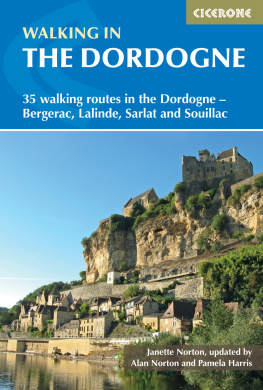Martin Walker - The Caves of Perigord
Here you can read online Martin Walker - The Caves of Perigord full text of the book (entire story) in english for free. Download pdf and epub, get meaning, cover and reviews about this ebook. year: 2002, publisher: Simon and Schuster, genre: Art. Description of the work, (preface) as well as reviews are available. Best literature library LitArk.com created for fans of good reading and offers a wide selection of genres:
Romance novel
Science fiction
Adventure
Detective
Science
History
Home and family
Prose
Art
Politics
Computer
Non-fiction
Religion
Business
Children
Humor
Choose a favorite category and find really read worthwhile books. Enjoy immersion in the world of imagination, feel the emotions of the characters or learn something new for yourself, make an fascinating discovery.
- Book:The Caves of Perigord
- Author:
- Publisher:Simon and Schuster
- Genre:
- Year:2002
- Rating:3 / 5
- Favourites:Add to favourites
- Your mark:
- 60
- 1
- 2
- 3
- 4
- 5
The Caves of Perigord: summary, description and annotation
We offer to read an annotation, description, summary or preface (depends on what the author of the book "The Caves of Perigord" wrote himself). If you haven't found the necessary information about the book — write in the comments, we will try to find it.
The Caves of Perigord — read online for free the complete book (whole text) full work
Below is the text of the book, divided by pages. System saving the place of the last page read, allows you to conveniently read the book "The Caves of Perigord" online for free, without having to search again every time where you left off. Put a bookmark, and you can go to the page where you finished reading at any time.
Font size:
Interval:
Bookmark:
This is a work of fiction, which seeks to remain faithful to the little that is known of Neolithic culture some seventeen thousand years ago and to the far better known history of the Resistance of the Prigord region of France in 1944. The connections between the two go far beyond the simple coincidence of geography. The Resistance frequently took advantage of caves in which to sleep, shelter and store weapons, caves that in some cases had been inhabited almost continuously for thirty millennia. In the course of researching this book, I learned that Berger, the Resistance name of the celebrated writer and future Gaullist minister Andr Malraux, boasted during a visit to the cave of Lascaux in 1969 that he had stored weapons there, even leaning his bazookas against the famous sketch of the eviscerated bison and the slain man with the head of a bird. Like many of Malrauxs reminiscences, this seems to have been rather too cavalier with the truth.
Andr Malraux and the late President Franois Mitterand, whose complicated politics included a period of apparent adherence to the Vichy regime before he joined the Resistance, are the joint inspirations for my fictional character Franois Malrand. Andr Malraux, who wrote ambitious and grandiose novels of love and revolution and fought in Spain in the 1930s, was a Resistance leader in Prigord along with his brothers. The fictional country home of President Malrand is based on the Chteau de la Vitrolle, near Le Bugue, which during the Liberation was briefly the secret HQ of Malraux and the British and U.S. officers on his team. Malraux was wounded and captured by the Germans, imprisoned in Toulouse, and released when the city was liberated by a Maquis force that had been organized, armed, and led by a British agent of SOE, the Special Operations Executive known as Hilaire. His real name was George Starr, and he indeed became a deputy mayor of a French commune, ran the Wheelwright network, and is deservedly honored here. One of the most petty acts in General de Gaulles career was to expel Starr from France in September 1944, apparently for no better reason than affront at the central role an Englishman had played in the Liberation of a large part of France.
Three other real figures from the Prigord Resistance have blended their way into the characters of Franois Malrand and Captain Jack Manners. One is the former playboy aristocrat Baron Philippe de Gunzbourg, code names Edgar and Philibert, an SOE agent who cycled some fifteen thousand miles around southwestern France organizing parachute drops and sabotage operations. The second is Commandant Jack, code name Nestor, whose real name was Jacques Poirier. Although French, he was widely taken for an English officer, and most of the arms with which the Resistance tried to slow the movements of the SS Das Reich division were supplied through him. The third is George Hiller, who attended the original banquet in the chteau organized by the redoubtable Soleil, Ren Coustellier, which concluded some time after midnight with a lecture on the Sten gun. Soleil was indeed at different times sentenced to death by the Communist Franc-Tireurs Partisans and by the Arme Secrte, and remains a controversial figure in the Prigord to this day, although his charismatic leadership and courage, like his heroic defense of Mouleydier, are beyond question.
The factional rivalries and thefts of arms among Communist, Gaullist, and other wings of the Resistance are a matter of historical fact, as is the meeting and the arguments at the monastery of St-Antoine on the outskirts of Brive on June 8, 1944. Despite the honorable intentions of most of the rank and file, who thought they were all fighting the same battle, it proved desperately difficult to rally Communists and Gaullists under a common command. The report on the role of the Communists in Bergerac that is cited in the text is a historical document, authored by Maurice Loupias, code name Bergeret, who was the regional commander of the Arme Secrte. Preparations for a Communist seizure of power as the Germans departed were forestalled by the return from Moscow of the exiled French Communist leader Maurice Thorez, who was under orders from Stalin to squash any disruption in France while it remained the crucial logistic base of the Western front against Nazi Germany.
The dreadful march of the second SS armored division, Das Reich, in June 1944, from Toulouse in southern France to the Normandy invasion front, is a central element of this novel and every effort has been made to describe it correctly. All German orders and reports cited in the book, including the one by the Das Reich commander, General Heinz Lammerding, are genuine. Its strength and units and composition, its route through the Prigord, the insurrection in Tulle, the brief battle of Cressensac, the tragedy of Terrasson, and the appalling atrocity of Oradour were all very much as described here. There is no historical evidence for my fictional suggestion that in the absence of heavy weapons, Resistance leaders were prepared to provoke the Germans into reprisals in order to delay them. During their postwar trial for the Oradour massacre, German veterans claimed that they had been angered by reports of the killing and abuse of their captured comrades. They carried little credibility. But it remains a startling and unprofessional dereliction of military duty that the German Army allowed one of its premier armored divisions to spend time hunting down the Maquis when it was desperately needed to fight the invasion in Normandy. M.R.D. Foot, in his magisterial official history, SOE in France, concludes: The extra fortnights delay imposed on what should have been a three-day journey may well have been of decisive importance for the successful securing of the Normandy bridgehead.
Details of rationing under Vichy, the organization of Vichy security forces (including the notorious North African unit), the location of German Headquarters, and the texts of BBC messages are as accurate as current research can make them. The Centre Jean Moulin in Bordeaux is an imposing and helpful library and a memorial to the Resistance. I am indebted to Andr Roullands La Vie en Prigord sous lOccupation, to Jacques Lagranges 1944 en Dordogne, to the memoirs of Ren Coustellier in Le Groupe Soleil, and to Guy Penauds magnificent Histoire de la Rsistance en Prigord. I also sought within the limits of fiction to base my accounts of sabotage and military operations on reality. Readers of George Millars Maquis, one of the outstanding books to emerge from the Resistance, will recognize my debt to him. I must also cite my reliance on Max Hastingss Das Reich, an admirable work of research and reconstruction.
I was introduced to the Prigord by my friends of three decades Gabrielle Merchez and Michael Mills, whose kindness and welcome kept bringing me back. My friend Jean-Henri Picot, son of the renowned Compagnon de la Rsistance Paul Picot, opened for me his family archive and recounted his boyhood reminiscences of being able to eat eggs and chicken daily in the Prigord countryside in 1942-44. Other friends and neighbors in the Prigord were generous with their dinner tables, their time, and their memories. I have borrowed some of their names, some of their personalities, and tried to recapture some of their warmth in this novel. Jean-Louis and Kati Perusin introduced me to the songs of Charles Trenet. And I am indebted to Jo and Collette da Cunha, and their invaluable personal library. It was Jo who first acquainted me with the local pineau, which he makes himself, and whose charms ensured that this book took rather longer to write than expected.
Anyone who has seen the extraordinary paintings of the Lascaux caves has probably asked themselves why artists of such genius limited themselves to the paintings of horses, bulls, deer, ibex, and bear, and did not seek to depict their landscapes and settings, or indeed themselves. Art and humanity are so closely entwined that the urge to portrait, whether in the statues of ancient Greece or in the paintings of the Renaissance, seems to be a logical and even inevitable part of the artistic process. But there are prehistoric images of the human form, in statuettes and in the caricatures of faces engraved at a Marche, near Poitiers. The lifestyle I ascribe to the people who created Lascaux, which seems to have borne great similarity to that of the North American Indians and Siberian tribes like the Evenk, is based on the fractional achaeological and anthropological evidence. The work and theories of lAbb Breuil and of Andr Leroi-Gourhan, allowing for fictional embellishment, are much as I describe. Without their efforts, we would know far, far less than we do, and M. Leroi-Gourhan, and Arlette Leroi-Gourhan, and Brigitte and Gilles Dellux have been, along with Ann Sievekings
Font size:
Interval:
Bookmark:
Similar books «The Caves of Perigord»
Look at similar books to The Caves of Perigord. We have selected literature similar in name and meaning in the hope of providing readers with more options to find new, interesting, not yet read works.
Discussion, reviews of the book The Caves of Perigord and just readers' own opinions. Leave your comments, write what you think about the work, its meaning or the main characters. Specify what exactly you liked and what you didn't like, and why you think so.











